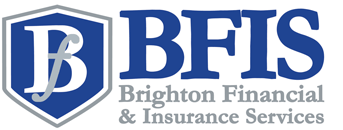What is a 529 College Savings Plan
See How We're Different
or call us: 888-412-7630

By: Vernon Williams | Commercial Agency Advisors & Principal
888-412-7630 | vwilliams@thebrightonfinancial.com
A 529 College Savings Plan is a type of investment account that helps individuals save money for future education expenses. It provides a tax-advantaged way to save and invest funds specifically for higher education, including both undergraduate and graduate programs. These plans are named after Section 529 of the Internal Revenue Code, which outlines their tax benefits and regulations.
Understanding the Basics of a 529 Plan
A 529 College Savings Plan is a state-sponsored investment program designed to help families save for future college expenses. The funds contributed to a 529 plan can be used to cover tuition, fees, books, and even room and board at eligible educational institutions. Each state offers its own version of a 529 plan, with varying features and benefits.
When it comes to planning for your child's education, a 529 plan can be a valuable tool. It allows you to set aside money specifically for college expenses, ensuring that you have a dedicated fund to cover the costs when the time comes. By starting early and contributing regularly, you can take advantage of the power of compound interest and potentially grow your savings over time.
One of the key advantages of a 529 plan is the tax benefits it offers. Contributions to a 529 plan are typically made with after-tax dollars, meaning you don't get an immediate tax deduction. However, the earnings on your contributions grow tax-free, and withdrawals for qualified educational expenses are also tax-free. This can result in significant savings over the long term.
Definition of a 529 College Savings Plan
A 529 College Savings Plan is a state-sponsored investment program designed to help families save for future college expenses. The funds contributed to a 529 plan can be used to cover tuition, fees, books, and even room and board at eligible educational institutions. Each state offers its own version of a 529 plan, with varying features and benefits.
When you open a 529 plan, you will typically have the option to choose between a prepaid tuition plan or an education savings plan. A prepaid tuition plan allows you to lock in today's tuition rates for future use, while an education savings plan allows you to invest your contributions in various investment options, such as mutual funds or exchange-traded funds (ETFs).
It's important to note that while 529 plans are sponsored by states, you are not limited to investing in your home state's plan. You can choose any state's plan that suits your needs, although some states offer additional tax benefits for residents who invest in their own state's plan.
The History and Origin of 529 Plans
The concept of 529 plans originated in the 1990s as a response to the rising costs of higher education. State governments saw the need to provide families with an efficient way to save for college while receiving tax advantages. Over time, 529 plans have evolved and become increasingly popular as a means to meet educational expenses.
The first 529 plans were established in Michigan and Illinois in 1996, and since then, all 50 states and the District of Columbia have created their own plans. These plans have been instrumental in helping families save for college and alleviate the financial burden associated with higher education.
As the popularity of 529 plans grew, so did the flexibility and options available to account holders. Many states now offer a wide range of investment options, allowing families to tailor their investments to their risk tolerance and financial goals. Additionally, some states have introduced innovative features, such as matching contributions or scholarships, to further incentivize saving for college.
Overall, 529 plans have proven to be a valuable tool for families seeking to save for college. By providing tax advantages, investment options, and flexibility, these plans have helped countless individuals and families make their educational dreams a reality.
The Benefits of a 529 College Savings Plan
Planning for your child's education is an important financial decision, and a 529 college savings plan can be a valuable tool to help you achieve your goals. Not only does it offer potential tax advantages, but it also provides flexibility and control over your funds.
Tax Advantages of 529 Plans
One of the key benefits of a 529 plan is the potential for tax savings. Contributions made to a 529 plan are typically tax-deductible at the state level, meaning they can reduce your state income tax liability. This can be a significant advantage, as it allows you to keep more of your hard-earned money in your pocket.
Additionally, investment earnings in a 529 plan grow tax-free. This means that any gains made on your investments within the plan are not subject to capital gains taxes. Over time, this can lead to substantial growth in your savings, allowing you to maximize the funds available for your child's education.
Furthermore, withdrawals used for qualified educational expenses are generally exempt from federal and state taxes. This means that when it comes time to pay for your child's college tuition, room and board, textbooks, and other eligible expenses, you won't have to worry about a hefty tax bill eating into your savings.
Flexibility and Control Over Funds
Another advantage of a 529 plan is the flexibility it offers. The account owner retains control over the funds and can decide how to invest them within the plan's investment options. This means that you have the freedom to choose investments that align with your risk tolerance and financial goals.
Moreover, it's also possible to change the beneficiary of the plan if the original beneficiary decides not to pursue higher education or receives scholarships. This flexibility allows you to adapt your savings strategy to your child's changing educational plans, ensuring that your hard-earned money is put to good use.
Additionally, a 529 plan can be used for a wide range of educational expenses. While the primary purpose of the plan is to save for college, it can also be used to cover expenses related to vocational schools, graduate programs, and even certain international institutions. This versatility provides you with peace of mind, knowing that your savings can be used to support your child's educational journey, regardless of the path they choose.
In conclusion, a 529 college savings plan offers numerous benefits that can help you save for your child's education while enjoying potential tax advantages, flexibility, and control over your funds. By taking advantage of these benefits, you can ensure that you are well-prepared to support your child's educational aspirations and provide them with the opportunities they deserve.
Types of 529 Plans
When it comes to planning for your child's education, 529 plans offer a great way to save and invest for future expenses. There are two main types of 529 plans: prepaid tuition plans and education savings plans. Let's take a closer look at each of them.
Prepaid Tuition Plans
Prepaid tuition plans are a popular choice for families who want to lock in future tuition rates at participating colleges or universities. With the rising costs of education, many families are concerned about how they will afford higher education for their children. By purchasing credits or units at today's prices, families can hedge against future increases in tuition expenses.
Imagine this: you have a newborn baby and you're already worried about how you'll be able to afford their college education in 18 years. With a prepaid tuition plan, you can start saving now and ensure that you'll be able to cover the costs when the time comes. It's like having a crystal ball that allows you to see into the future and plan accordingly.
Not only do prepaid tuition plans provide peace of mind, but they also offer flexibility. These plans typically allow you to use the funds at any eligible educational institution, whether it's in-state or out-of-state. So, if your child decides to attend a college in a different state, you can still use the funds you've saved.
Education Savings Plans
If you prefer a more flexible approach to saving for education expenses, education savings plans might be the right choice for you. Also known as college savings plans, these investment accounts allow individuals to save for education expenses by investing their contributions in a variety of investment options, such as mutual funds or exchange-traded funds.
Imagine this: you're a savvy investor and you want to take advantage of the potential growth in the stock market to fund your child's education. With an education savings plan, you can choose from a range of investment options that suit your risk tolerance and financial goals. Whether you're a conservative investor who prefers low-risk investments or an aggressive investor who is willing to take on more risk for potentially higher returns, there's an investment option for you.
One of the great advantages of education savings plans is the potential for tax benefits. Depending on the state you live in, you may be eligible for a state tax deduction or credit for contributions made to the plan. Additionally, the earnings on your investments grow tax-free as long as the funds are used for qualified education expenses.
So, whether you choose a prepaid tuition plan or an education savings plan, 529 plans offer a valuable tool for saving and investing for your child's education. Start planning today and give your child a head start on their future!
How to Set Up a 529 Plan
Setting up a 529 plan is a smart way to save for your child's education. It provides tax advantages and flexibility, making it an attractive option for many families. If you're considering opening a 529 plan, there are a few important factors to keep in mind.
Choosing the Right Plan
When setting up a 529 plan, it's essential to research and compare the options available. There are different plans offered by various states, each with its own set of features and benefits. Factors to consider include the investment options offered, fees and expenses associated with the plan, and any potential state tax advantages.
It's also crucial to evaluate the plan's contribution limits and withdrawal rules. Some plans have higher contribution limits, allowing you to save more for your child's education. Additionally, understanding the withdrawal rules is important to avoid any penalties or restrictions when it comes time to use the funds.
Steps to Open a 529 Plan
Opening a 529 plan involves several straightforward steps. First, you'll need to choose which state's plan you want to use. It's important to note that you're not limited to your own state's plan. You can choose any plan that suits your needs and offers the features you're looking for.
Once you've decided on a plan, you'll need to gather the necessary documentation. This typically includes identification and Social Security numbers for both the account owner and the beneficiary. Having these documents ready will make the application process smoother and faster.
Finally, you'll complete the application to open the 529 plan. This usually involves providing personal information, such as your name, address, and contact details. You may also need to specify the amount of your initial contribution to start the account. It's important to carefully review the application and ensure that all information is accurate before submitting it.
After completing these steps, you'll be on your way to setting up a 529 plan for your child's future education expenses. It's a wise investment that can provide peace of mind and financial security as your child grows and prepares for college.
Common Misconceptions About 529 Plans
Misunderstanding the Beneficiary Rules
One common misconception about 529 plans is that the beneficiary must be a child or immediate family member. In reality, the beneficiary can be anyone, including yourself. This flexibility allows individuals to save for their own educational expenses or even change the beneficiary to another family member if needed.
Overestimating the Impact on Financial Aid
While it's true that having a 529 plan may impact financial aid eligibility, it's important to understand the nuances. A 529 plan is considered an asset of the account owner, so it has a lesser impact on financial aid calculations compared to assets owned by the student. Additionally, some financial aid formulas exclude a certain percentage of a 529 plan's value from the assessment.
In conclusion, a 529 College Savings Plan is a valuable tool for saving and investing specifically for higher education expenses. It offers tax advantages, flexibility, and multiple plan options to suit individual needs. By understanding the basics and debunking common misconceptions, individuals can take advantage of these plans to better prepare for future educational endeavors.
Request A Quote
Get Started Today!
We'll Reply in 15min or less*
Contact Us
*Response time varies based on hours of operation













